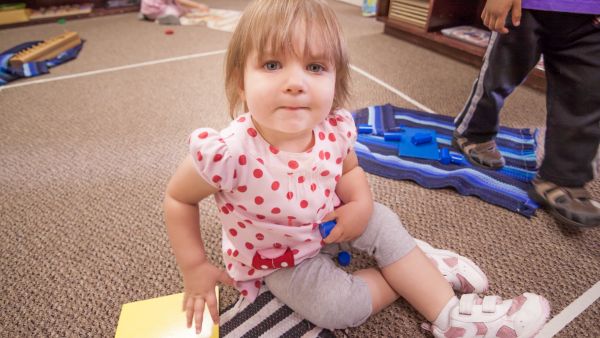
Toddlers are pure, unfettered fun. They laugh with their whole bodies. They run even when they barely can, and they don’t care a whit about how silly they can be. They climb stairs, furniture, and jungle gyms without fear. From the moment they wake up in the morning, all they want to do is eat, babble, experiment, explore, and play.
Why stop in the middle of all that to go to the toilet when a diaper will do just fine?
Welcome To Potty Training
Many preschools require their students to be daytime potty-trained before accepting them into the classroom. If you’re a parent dreading the first September school day, you know that the time has come.
You’ve heard lots of stories. One playgroup mother shrugs off the whole process while her eighteen-month-old runs around without diapers because, so you’re told, the girl practically trained herself. More likely, you’re gripped by the fear that your child will behave just like the boy next door who, despite desperate efforts by the parents, goes blue-in-the-face at the mention of toileting, though he’s old enough to attend kindergarten.
Turning toileting into a struggle of wills is one sure way to lose the battle. To make your child’s transition out of diapers as smooth as possible, check out these tips and tricks before you begin.
Ready?
Readiness is one of the keys to a successful potty training experience. Trying to train a child who isn’t physically or emotionally able is a surefire way to turn the process into a clash of the titans. Conventional wisdom states that most kids should be trained by two-and-a-half years of age, but the key is the term most kids. You know your child. If he or she doesn’t show signs of readiness, ignore conventional wisdom. You’re more likely to have a smooth transition if you wait another month or two or even six.
Your child may be ready if he or she:
• Shows physical readiness by having dry diapers for a couple of hours at a time and eliminates on a regular basis
• Can follow simple one-step directions.
• Can take off his or her own bottoms and put them back on.
• Reveals through words, expressions, or behavior that he or she has to go.
• Shows curiosity in toilets or toileting.
• Shows discomfort in a wet or dirty diaper.
• Is not in a defiant or limit-testing phase.
Rarely will any child exhibit all of the above signs, but if a late-age toddler exhibits most, consider him or her ready.
Set?
Before you start the process of toilet training, it helps if you set the stage. That means buying props, like a potty seat that can attach to the bathroom toilet. Some kids prefer a separate potty seat that they can call their own. Separate potty seats come in a bewildering array of designs from simple mini-johns to toy-like ride-on potty ponies. Teaching them on the toilet itself is ideal, but if you think a special new purchase will pique your child’s interest, go for it.
The second important element of preparation involves introducing the concept in a casual, daily way. Consider these tips:
• Move the diapers to the bathroom, where the business is done.
• Bring your child along when you dump the contents of their diaper into the toilet. Flush later if you think it’ll startle or frighten them. They’ll have time to learn proper hygiene etiquette after you’ve got them going regularly.
• If you’re comfortable with a modest demonstration, allow them into the room while you’re peeing. Children learn by imitating.
• Decide what kind of language you want to use, whether it be simple ‘pee’ and ‘poop’ or ‘urinate’ and ‘defecate,’ so that communication is clear.
• Purchase a potty-training doll that holds water until pressed, giving your child a plaything to give a measure of control of the process.
• Bring your child to the store to pick out a soon-to-be favorite pair of ‘big kid’ underwear.
• Buy a potty-training book, like Everyone Poops by Taro Gomi.
Go!
Ideally, when you begin potty training, try to choose a stretch of days with few interruptions, so you and your child can concentrate on this new skill. Sit them on the potty at regular intervals. Give them a toy or a book to read and stay with them. If nothing happens then, that’s okay! They can always use it 20 minutes later. During those days, keep an eye on your child for the tell-tale signs of toilet neediness: Squirming, clutching themselves, or squatting. Respond quickly! When they hear that they’re making the tinkling or plopping sound in the toilet, they’ll be thrilled.
Consider these tried-and-true tricks and tips for those crucial first days:
• If weather permits, let them run bottomless in the backyard. They’ll soon recognize when they’re going and associate the feeling with the need for speed.
• Chart their success by putting stickers on a reward chart or pennies in a jar, all driving toward a specific goal like a trip to the local ice creamery, a favorite play place, or a small toy.
• Praise them if they manage to catch the moment, and continue to do so to reinforce the behavior.
• Shrug off accidents—whoops!—then clean them up and get them back to what they were doing.
• After each potty session, whether successful or not, teach good hygiene so it becomes a habit. Girls should wipe front to back, and both girls and boys should wash their hands thoroughly after flushing.
• Consistency is key, so make sure you take a potty seat with you wherever you go during the early potty-training days.
• Inform all caregivers, whether they be daycare workers or grandparents, that your child is potty-training so they can support the process.
Boy Oh Boy
For whatever reason, boys tend to be potty trained at later ages than girls. Unless you don’t mind cleaning up after an enthusiastic sprayer, it’s probably best to teach a boy to urinate sitting down until they’ve mastered some urinary control and better hand-eye coordination. Once he knows when he has to go, you can use the family bathtub and a tin cup to teach him how to stand up and aim. There are also lots of disposable tinkle targets designed for just this purpose.
Nighty-Night
Although everyone hopes their child will be potty-trained within a short period of time, potty-training often happens in stages. Your child may master elimination before urination, or the other way around. She may master daytime toilet training quickly, but take months to stay dry at night. Patience is as vital as compassion in this phase of their lives.
In general, overnight training takes longer. Only about 2/3 of kids under the age of three can control their bladders over a long sleep, so it may take some time before he or she is completely pull-up free.
You can nudge the process along in various ways, including:
• Buying a waterproof mattress protector because accidents happen.
• Avoiding giving them liquids an hour or two before they go to bed.
• Making it a habit to sit on the potty before bedtime.
• Waking them up to put them on the potty when you go to bed, especially if they have a particularly early bedtime.
Teaching your child to potty train is one of the first steps to independence, so when they finally accomplish their first full day dry, make sure to give them lots of hugs and kisses while they still allow it.





















